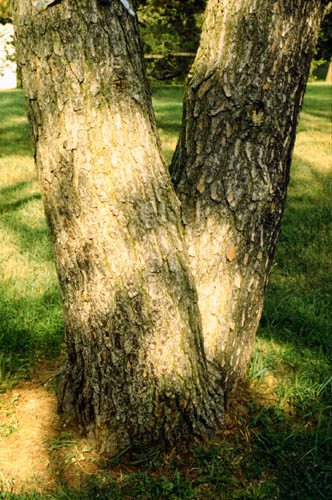Pinus virginiana
Virginia Pine, Scrub Pine
Pinaceae
ExpandHabitat
- native to the east-central coast of the United States
- cold hardy to zone 5
Habit and Form
- evergreen tree
- broadly pyramidal in shape when young, more flat-topped and irregular with age
- varies in size from 10' to 50' tall with a slightly smaller spread
- fine to medium texture
- slow growth rate
Summer Foliage
- serrated, pointed needles
- 2 needles per fasicle
- needles have a slight twist
- needles roughly 3" long
- dark green
Autumn Foliage
- no fall color (evergreen)
- needles turn yellow-green in winter
- needles persist 4 years
Flowers
- monoecious
- no ornamental value
Fruit
- dark brown or reddish brown cone; shiny
- conical in shape
- held alone or in clusters of 2 to 4
- persist after maturing
- mature after 2 years
- cones have a thorn-like attachment, which is quite sharp
Bark
- reddish brown
- generally smooth, but eventually develops scales and plates
- new stems are slender with a purplish tint
Culture
- prefers a dry, deep, loam soil
- adaptable to poor soils
- low salt tolerance
- full sun
- needs little pruning
Landscape Uses
- bonsai
- used as a Christmas tree in southeastern United States
- highway medians
- buffer zones
Liabilities
- sharp cones and pointed needles
- weak crotch angles
- easily damaged by mechanical impact (soil compaction, string trimmers)
- susceptible to pitch canker, pine sawflies, and Ips beetles
ID Features
- purplish new growth
- needles in 2's and sharp
- cones have a sharp attachment
Propagation
- seed; stratification improves germination
Cultivars/Varieties
'Wate's Golden' - The only commonly available cultivar is this yellow-foliaged novelty. The yellow is brilliant in winter, muting to green in summer.
